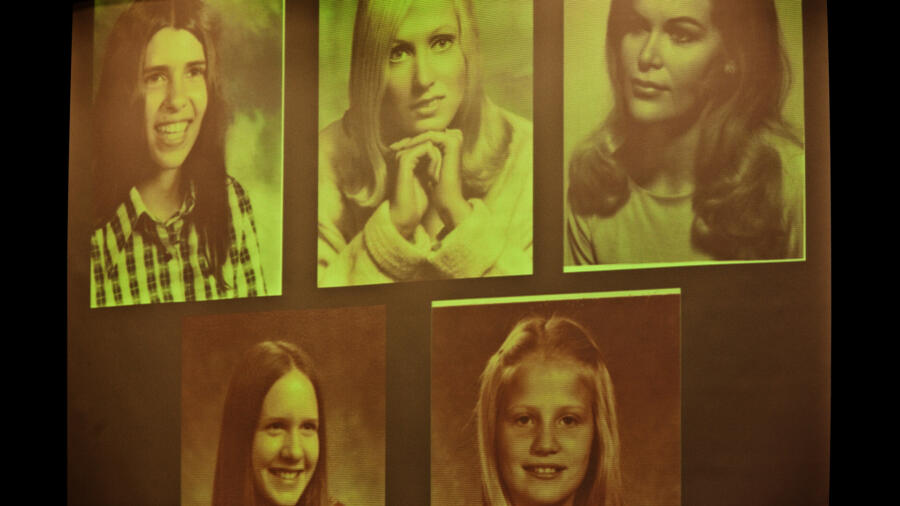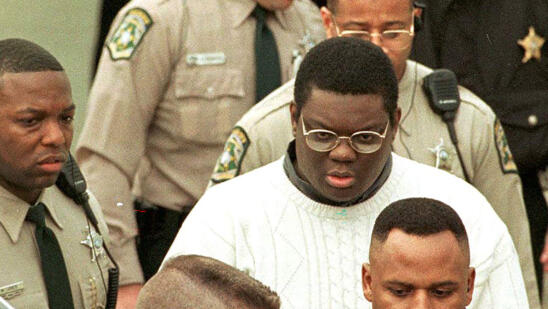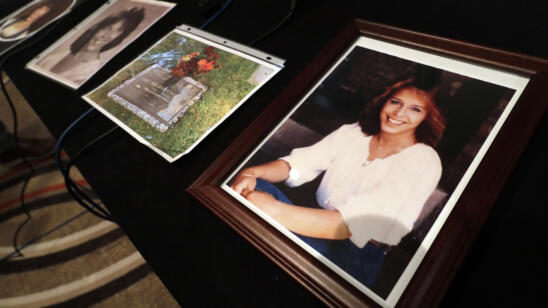The following content contains disturbing accounts of violence, including sexual violence. Discretion is advised.
In 2003, Steven Mack, a homicide detective with the Huntington Beach (California) Police Department, took a leading role in retrying a twice-overturned murder case against Rodney Alcala. His efforts led to the uncovering of a prolific serial killer.
That year, Alcala—a suave, one-time dating show contestant—was arrested for the third time and charged with kidnapping and murdering 12-year-old Huntington Beach resident Robin Samsoe in the summer of 1979.
Alcala, 60 years old at the time of his third arrest, had previously won two appeals nullifying his 1980 and 1986 convictions in the case, both of which carried death penalty sentences. The California Supreme Court overturned the first trial’s verdict because jurors had been improperly informed about his prior sex crimes. A federal appeals judge shot down his second conviction in 2001 after determining that Alcala was precluded from developing and presenting evidence crucial to his defense.
“I think the detectives prior to my involvement in the case suspected Alcala was a serial killer and had other victims,” Mack tells A&E True Crime. “But they didn’t have anything linking him to [other cases].”
Mack, who retired in 2008, had a new tool at his disposal that his predecessors didn’t: DNA testing.
Rummaging through some items previous investigators had discovered decades earlier inside a storage locker belonging to Alcala, Mack noticed two rose earrings in a small red satin pouch. Something told him they might have belonged to one of Alcala’s victims, Mack tells A&E True Crime.
“We were able to find the DNA of another victim, Charlotte Lamb, on one of the earrings,” Mack recalls. “It had been in our evidence room all that time.”
On June 24, 1978, exactly a year before Samsoe went missing, Lamb’s dead body was discovered in the laundry room of an apartment complex in El Segundo, says Matt Murphy, a former Orange County deputy district attorney who prosecuted Alcala during his third trial in 2010.
“She was found strangled with her arms behind her back,” Murphy tells A&E True Crime. “She also had bite marks on one of her breasts.”
More DNA testing, including Alcala’s own samples, further linked him to Lamb’s murder, as well as to the unsolved homicides of seven other women in the Los Angeles area, New York City and Granger, Wyoming, during the 1970s.
The media dubbed Alcala “The Dating Game Killer” because he appeared on the popular television show in 1978 in the midst of his murdering spree.
“He was a bonafide psychopath who was charming and had a very high IQ,” Murphy says.
Alcala’s First Confirmed Victim
In 1971, Alcala was a film student at New York University studying under film director and producer Roman Polanski. He earned money as a photographer and worked part-time as a security guard and camp counselor.
Investigators would later learn that Alcala’s job as a photographer gave him easy access to many women and young girls, including some who were later determined to be his murder victims. Alcala stored hundreds of photographs—some explicit—in a storage locker in Seattle, which law enforcement ultimately found in 1979.
In June of 1971, Alcala raped, bit and strangled Cornelia Crilley, a 23-year-old TWA flight attendant, in her Manhattan apartment, according to New York media reports. Six years later, Alcala killed Ellen Jane Hover, a 23-year-old aspiring music conductor who disappeared after leaving her Manhattan apartment on July 15, 1977.
A year later, Hover’s remains were found on the grounds of the Rockefeller estate in Westchester County, near an area where Alcala photographed women.
Alcala’s Murderous Rampage Heads West
After killing Hover, Alcala trekked west, crisscrossing California, Washington and Wyoming during the late 1970s. Law enforcement officials later confirmed Alcala’s involvement in the murders of five women in California and Wyoming between 1977 and 1979, before he killed Samsoe.
On November 10, 1977, Alcala murdered Jill Barcomb, an 18-year-old New York transplant who moved to Los Angeles with aspirations to become a Hollywood actress, former prosecutor Murphy tells A&E True Crime. “She was found brutally assaulted with multiple ligatures,” he says. “Her face had been smashed in with a rock.”
Almost 30 days later, Alcala sexually assaulted, tortured and strangled to death Georgia Wixted, a 27-year-old pediatric cancer nurse who had just moved into her own apartment in Los Angeles. “She was a super sweet person,” Murphy says.
The photo stash in Alcala’s storage locker also gave homicide investigators in Wyoming a substantive lead in the unsolved murder of Christine Ruth Thornton, a 28-year-old pregnant woman who went missing from her ranch in 1977. Her remains were discovered four years later.
Lamb, the woman found in the El Segundo apartment complex in 1978, was Alcala’s next victim, Murphy says. “She was a legal secretary who also moved to California with big dreams of becoming a star,” he says. “She was also strikingly beautiful. On the night she was killed, she went to a bar in Santa Monica where she most likely met Alcala.”
A year later, Alcala murdered 21-year-old computer programmer Jill Parenteau in Burbank.
Alcala’s Final Confirmed Murder Victim
Samsoe, the child from Huntington Beach, was on her way to ballet class when Alcala abducted her in 1979, says Mack. “She was a precocious girl who loved the beach and dancing,” he says. “As the baby of her family, she was doted on by her parents, brother and sister. Her kidnapping and murder devastated them.”
In March 2010, a jury sentenced Alcala to death following his third conviction for the murders of Samsoe and his four other California victims: Barcomb, Wixted, Lamb and Parenteau.
In 2011, Alcala was extradited and charged in New York state court for the murders of Crilley and Hover. Homicide investigators were able to match Alcala’s DNA to saliva found on Crilley’s body that had been preserved by New York law enforcement officials. Detectives were also able to match a mold of Alcala’s teeth to the bite.
In 2012, Alcala pleaded guilty to the New York murders. Around the same time, law enforcement officials in Seattle, Washington, also started looking at Alcala as a possible suspect in two unsolved murders in 1977 and 1978, and the disappearance of a woman in 1976. However, the inquiry’s outcome remains unclear. A spokesperson for the Seattle Police Department declined to comment on the still-open investigation.
In 2013, the sister of Wyoming victim Thornton recognized her in a photo in an online database that was created by California investigators. The collection featured dozens of women Alcala had photographed. The photo was taken in the desert near the spot where Thornton’s body was found. In 2016, Alcala was charged with her murder.
In 2021, prosecutors dismissed the Wyoming case shortly following Alcala’s death in prison from natural causes.
Investigators and prosecutors from the east to west coasts theorize Alcala may have had more than 100 victims, Murphy says.
The overturned convictions and the three trials took a serious toll on Samsoe’s surviving relatives, Mack says. “Alcala absolutely thought he was smarter than everybody else,” he says. “We made sure the case was airtight so he would have no chance at winning an appeal.”
Securing Alcala’s third conviction provided Samoe’s family with “some sense of justice,” Mack says.
“I don’t think any family can have closure from the type of devastation Alcala inflicted on them,” Mack says. “But they will get some satisfaction to know he is now burning… in hell.”
Related Features:
‘The Dating Game Killer’ Wasn’t the Only Murderer to Go on a Game Show
How Rodney Alcala, ‘The Dating Game Killer,’ Used Photography to Lure Victims


